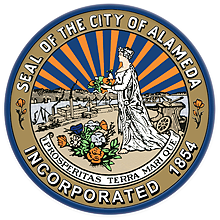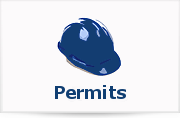Nobody is happy about the worsening traffic congestion in Alameda and the Bay Area. It is taking longer for us to drive to work each morning, drop off the kids at school, and drive to do the things we need to do. It’s frustrating. Many Alamedians blame the new housing in Alameda for our traffic problems. At City Hall, we hear this a lot: “Traffic has gotten so much worse because of all the new housing that the City Council and Planning Board are approving. They have to stop approving all this new housing! Don’t they understand that we are an island? What is wrong with the planners in City Hall?” Well, as one of those planners in City Hall, let me tell you what is going on:
The statewide housing crisis is impacting Alameda. Long term Alameda families are being forced out of town because of rising housing costs. Young families and even seniors that have lived here their entire lives, are being forced to move out because they can no longer afford to rent or buy a home here. Many of our workers that are the foundation of Alameda’s quality of life can no longer afford to live in Alameda or near Alameda. More people are living in their cars, in our city parks, and on our streets. Alameda cannot ignore this crisis and its consequences to our community. Alameda is responding in a variety of ways, including trying to make a dent in the limited supply of housing for all segments of the Alameda community. And whether or not you believe it’s the right thing to do, it is no longer an option.
Just last year, the State Legislature decided that the housing issue had reached crisis level and required new stricter statewide regulations. The Legislature passed a total of 15 new bills to ensure that cities like Alameda allow new housing to be built. By law, every city in California must provide its fair share of the State’s housing needs. To comply with State Law, the Alameda City Council zoned enough land in Alameda to meet our regional housing needs allocation (RHNA), which represents our fair share. This residentially zoned land includes the land at Alameda Marina and Encinal Terminals (along Clement Avenue), the Shipways site (at Marina Village), Site A at Alameda Point, and a variety of smaller sites throughout town.
The 2017 bills also ensure that once land in Alameda is zoned by the City Council for housing to meet the RHNA, the Alameda Planning Board and City Council cannot change it back or deny a property owner’s right to build housing on that land because the residents of Alameda are concerned about traffic congestion or parking. The Planning Board and City Council also cannot reduce the number of housing units allowed on each site, unless there is a specific, adverse impact to public health and safety, and reducing the number of units is the only way to address that public health and safety impact. As frustrating as it may be, traffic congestion and longer commute times are not considered “health or safety” impacts.
In addition to these new laws, the State legislature significantly increased the penalties against cities that violate them. New laws make it easier for parties to sue cities that don’t zone enough land or deny residential projects, and they establish mandatory minimum financial penalties on a per unit basis that the City could be required to pay if it doesn’t approve the units. State laws also disqualify cities, which violate these laws, from access to State parks and transportation grant money. Alameda has relied on these State funds for parks like the new Jean Sweeney Open Space Park and our Cross Alameda Trail and for street and road improvements throughout Alameda.
But what about the traffic problems? We can’t just keep building housing? We have done our fair share, right? Well, that is debatable. Between 1990 and 2018, California’s population grew by about 34%, and the Bay Area population grew by about 27%. During this same period, the Alameda population grew by less than 3%. Is our worsening traffic really the result of the approximately 3,000 additional men, women, and children who are living in Alameda since 1990, or is it the result of the over 1.68 million people that have moved into places surrounding us? I suspect our traffic problems have more to do with the region’s 27% growth rate, than Alameda’s 3% growth rate.
From the State’s perspective, and from the perspective of the Bay Area’s regional transportation plan, when cities like Alameda passed growth control measures in the 1970s or simply stopped approving new housing, the Bay Area’s new housing was forced to sprawl out into the farm and ranch lands of Davis, Antioch, and Tracy, forcing the growing population to drive further to their jobs in the inner Bay Area cities like San Francisco, Oakland, and Alameda. So, more cars on the freeways and roads driving further each day, creating more traffic, more congestion, and more greenhouse gases, which contributes to global warming and sea level rise. Everyone in the Bay Area is being impacted by traffic, but Alameda will be impacted by sea level rise more than any other Bay Area community that I know of.
So if the State is requiring us to build housing, and if growth control is not an effective traffic reduction strategy, what is the City doing to improve our local transportation problems? Actually quite a lot. With about $60 million in grants and contributions for new transportation facilities and over $1 million in annual transportation fees from housing developers, the City of Alameda is doing quite a lot to improve traffic in Alameda. Alameda’s transportation improvements will be the subject of Part 2 of this two part story.
Andrew Thomas, Assistant Community Development Director and City Planner for the City of Alameda






